USAID Programs and Priorities in Haiti
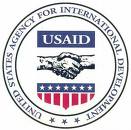 The United States Agency for International Development (USAID) is the development agency of the American government and a major bilateral donor to Haiti. USG support to Haiti is considerable - In Fiscal Year (FY) 2007, USAID provided 245 million dollars in foreign assistance to Haiti, 279 million in FY 2008 and is scheduled to provide 245 million in FY 2009. The goal of this support can be summarized in one word - stability. The point of this blog is not to evaluate these programs but to point out what USAID is doing, where, and to highlight some useful resources on the USAID/Haiti website.
The United States Agency for International Development (USAID) is the development agency of the American government and a major bilateral donor to Haiti. USG support to Haiti is considerable - In Fiscal Year (FY) 2007, USAID provided 245 million dollars in foreign assistance to Haiti, 279 million in FY 2008 and is scheduled to provide 245 million in FY 2009. The goal of this support can be summarized in one word - stability. The point of this blog is not to evaluate these programs but to point out what USAID is doing, where, and to highlight some useful resources on the USAID/Haiti website.
 You can view USAID/Haiti's overarching Strategic Plan here and its more detailed Operational Plan here. USAID's funds programs that will make progress toward political, economic, and social stability. When we are talking about stability in Haiti, we are mostly talking about urban insecurity - Port au Prince and other urban hotspots like Gonaives. While Port smolders, most of the country remains rural and calm. Sadly, two generations of dictatorship resulted in government functions and resources being centralized in Port au Prince - a seriously overcrowded, difficult to manage city with slums that will continue to grow so long as agriculture is not a viable livelihood.
You can view USAID/Haiti's overarching Strategic Plan here and its more detailed Operational Plan here. USAID's funds programs that will make progress toward political, economic, and social stability. When we are talking about stability in Haiti, we are mostly talking about urban insecurity - Port au Prince and other urban hotspots like Gonaives. While Port smolders, most of the country remains rural and calm. Sadly, two generations of dictatorship resulted in government functions and resources being centralized in Port au Prince - a seriously overcrowded, difficult to manage city with slums that will continue to grow so long as agriculture is not a viable livelihood.
 Sometimes I hear calls for the restoration of the Haitian military which makes me cringe. Haiti needs an accountable, professional police force that is paid in full, on time and is large enough to maintain a constant presence in hot spots. Over five years, USAID will train at least 1,000 new members of the Haitian National Police (HNP) and at least half of the 12,000 Haitian police. This is a key program.
Sometimes I hear calls for the restoration of the Haitian military which makes me cringe. Haiti needs an accountable, professional police force that is paid in full, on time and is large enough to maintain a constant presence in hot spots. Over five years, USAID will train at least 1,000 new members of the Haitian National Police (HNP) and at least half of the 12,000 Haitian police. This is a key program.
 Quite a bit of work being done to interrupt drug trafficking through Haiti as well. Unless progress is made here, cleaning up the police force likely will not be possible. Drugs are a corrupting force and Haiti has been on the verge of being a narco-state for years. The police in my village, and many others, ran drugs though I hope this has changed since I left in 2002. The US Coast Guard is supplying vessels to the Haitian Coast Guard, refurbishing bases, and providing training to improve their maritime drug interdiction operations. But drugs don't just come in on boats, they are often airdropped as well. According to the Operational Plan, no other countries are involved in counter-narcotics in Haiti.
Quite a bit of work being done to interrupt drug trafficking through Haiti as well. Unless progress is made here, cleaning up the police force likely will not be possible. Drugs are a corrupting force and Haiti has been on the verge of being a narco-state for years. The police in my village, and many others, ran drugs though I hope this has changed since I left in 2002. The US Coast Guard is supplying vessels to the Haitian Coast Guard, refurbishing bases, and providing training to improve their maritime drug interdiction operations. But drugs don't just come in on boats, they are often airdropped as well. According to the Operational Plan, no other countries are involved in counter-narcotics in Haiti.
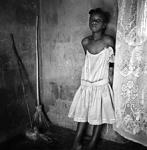 USAID is also funding programs in human trafficking, especially concerning restaveks. The short term goal is to identify, protect, and assist victims directly and over the long term to help the Haitian government develop the capacity to respond itself. USAID hopes that through these efforts in five years, "...human trafficking will raise raise public outcry, increase protection through improved law enforcement and prosecution, and by extending socialization support that avoid lifelong poverty and enhances a stable environment." Many other donors are involved in preventing and responding to human trafficking in Haiti. Major organizations involved include the International Organization for Migration (IOM), the United Nations Childrens Fund (UNICEF), and to a certain extent, MINUSTAH. In the only country to have ever led a successful slave rebellion, there is no place for modern day slavery. We hope these efforts succeed. If you haven't seen the recent ABC special on human trafficking with an emphasis on restaveks, click here.
USAID is also funding programs in human trafficking, especially concerning restaveks. The short term goal is to identify, protect, and assist victims directly and over the long term to help the Haitian government develop the capacity to respond itself. USAID hopes that through these efforts in five years, "...human trafficking will raise raise public outcry, increase protection through improved law enforcement and prosecution, and by extending socialization support that avoid lifelong poverty and enhances a stable environment." Many other donors are involved in preventing and responding to human trafficking in Haiti. Major organizations involved include the International Organization for Migration (IOM), the United Nations Childrens Fund (UNICEF), and to a certain extent, MINUSTAH. In the only country to have ever led a successful slave rebellion, there is no place for modern day slavery. We hope these efforts succeed. If you haven't seen the recent ABC special on human trafficking with an emphasis on restaveks, click here.
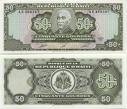 Job creation is also a priority. USAID is funding IOM to create employment opportunities in conflict prone urban areas. The hope is to create 10,000 long term jobs and implement 700 small scale infastructure projects. World Bank has a similar program for small cities and certain rural areas. MINUSTAH is funding job creation programs throughout the country. UNOPS has a 250,000 canal cleaning project and if you've seen the canals, you understand how badly this is needed. It notes that WHO is employing people to work on water infrastructure. CHF is USAID's primary non governmental organization (NGO) implementing partner for job creation in Port, Gonaives, Cap Haitian, Saint Marc and Petit (Ti) Goave. Basic infrastructure needs are great but there is a huge labor force willing to meet them. There are many different initiatives but it would be great to see a unified national program (a la the Civilian Conversation Corps) that could (in the long term) be managed by the Haitian government.
Job creation is also a priority. USAID is funding IOM to create employment opportunities in conflict prone urban areas. The hope is to create 10,000 long term jobs and implement 700 small scale infastructure projects. World Bank has a similar program for small cities and certain rural areas. MINUSTAH is funding job creation programs throughout the country. UNOPS has a 250,000 canal cleaning project and if you've seen the canals, you understand how badly this is needed. It notes that WHO is employing people to work on water infrastructure. CHF is USAID's primary non governmental organization (NGO) implementing partner for job creation in Port, Gonaives, Cap Haitian, Saint Marc and Petit (Ti) Goave. Basic infrastructure needs are great but there is a huge labor force willing to meet them. There are many different initiatives but it would be great to see a unified national program (a la the Civilian Conversation Corps) that could (in the long term) be managed by the Haitian government.
 USAID invests in human rights promotion as well - namely training, supporting advocacy efforts against violent crime and torture, and trying to increase coordination between the Haitian government and the many different stakeholders involved in justice and human rights in Haiti. The Organization of American States (OAS) is also working on human rights issues, as is the National Human Rights Defense Network, and many small but very energetic organization in Haiti and abroad.
USAID invests in human rights promotion as well - namely training, supporting advocacy efforts against violent crime and torture, and trying to increase coordination between the Haitian government and the many different stakeholders involved in justice and human rights in Haiti. The Organization of American States (OAS) is also working on human rights issues, as is the National Human Rights Defense Network, and many small but very energetic organization in Haiti and abroad.
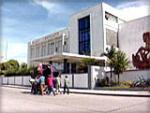 We can all agree the capacity of the government needs to be built in order to face up to the social, economic, and environmental problems facing the country. Perhaps the easiest way to do this would be to enfranchise the Diaspora by allowing them to hold dual citizenship, to vote, and to compete for government jobs. USAID hopes to provide training and technical assistance to increase accountability and to help Parliament on time every year. Canada, through the Canadian International Development Agency (CIDA), is keenly interested in promoting good governance as well. MINUSTAH is willing to provide funds for the rennovation of the Parliament itself and the plan notes that the Inter American Development Bank and France may be willing to do so as well. Part of good governance is rooting out corruption in all its forms. USAID will work with the government to draft access to information and whistle blower protection laws - both are very much needed.
We can all agree the capacity of the government needs to be built in order to face up to the social, economic, and environmental problems facing the country. Perhaps the easiest way to do this would be to enfranchise the Diaspora by allowing them to hold dual citizenship, to vote, and to compete for government jobs. USAID hopes to provide training and technical assistance to increase accountability and to help Parliament on time every year. Canada, through the Canadian International Development Agency (CIDA), is keenly interested in promoting good governance as well. MINUSTAH is willing to provide funds for the rennovation of the Parliament itself and the plan notes that the Inter American Development Bank and France may be willing to do so as well. Part of good governance is rooting out corruption in all its forms. USAID will work with the government to draft access to information and whistle blower protection laws - both are very much needed.

Much needed investments are also being made in the highly disorganized Haitian educational system. One of the best interventions is to make sure teachers are paid on time so they don't seek out other professions, leaving individuals with poor training and poor language skills to teach. Education is too important to leave to chance. USAID support is going toward a teacher certification program, management and leadership training for school administrators, the formation of parent-teacher associations, accelerated learning programs for overage students and out of school youth, and scholarship and microfinance programs that will allow vulnerable students to stay in school - critical, especially for girls, in this time of food insecurity.
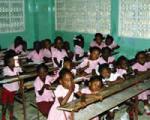 Recognizing how much needs to be done to improve access to and quality of education in Haiti, there are many donors involved including the World Bank, the Inter-American Development Bank, the EU, Canada and to a lesser extent France, Spain, and Brazil. UNESCO chairs meetings with stakeholders involved in education. On a side note, sometimes we are asked about opportunities for scholarships to the United States. The plan notes that the State Department supports higher education opportunities through Fulbright and International Visitor Programs.
Recognizing how much needs to be done to improve access to and quality of education in Haiti, there are many donors involved including the World Bank, the Inter-American Development Bank, the EU, Canada and to a lesser extent France, Spain, and Brazil. UNESCO chairs meetings with stakeholders involved in education. On a side note, sometimes we are asked about opportunities for scholarships to the United States. The plan notes that the State Department supports higher education opportunities through Fulbright and International Visitor Programs.

The website has a long list of USAID partners which includes the Pan American Development Foundation, CHF, the National Center for State Courts, the State University of New York, ARD, the Heritage Haiti Foundation (La Fondation Héritage pour Haïti), SRA International, OAS, PACT, the National Democratic Institute, Management Sciences for Health, Plan International, World Concern, World Vision, Catholic Relief Services, Care, ACDI/VOCA, Chemonics, Caribbean-Central American Action, Capital Bank, Sogebank, Development Alternatives Inc, EDC, UNOPS, and others.
 The plan also contains information on activities on health, agriculture, trade, and the environment such as USAID's efforts to protect Haitian watersheds. Given the plan's emphasis on stability, USAID has been deeply worried about increased food insecurity and the possible for continued unrest that would destabilize this struggling democracy. There are some interesting food security resources on the website including a map of food insecurity vulnerability, a fact sheet on USAID programs that promote food security, a FY 2008 map of USAID supported food distributions, and a summary of emergency and development food assistance.
The plan also contains information on activities on health, agriculture, trade, and the environment such as USAID's efforts to protect Haitian watersheds. Given the plan's emphasis on stability, USAID has been deeply worried about increased food insecurity and the possible for continued unrest that would destabilize this struggling democracy. There are some interesting food security resources on the website including a map of food insecurity vulnerability, a fact sheet on USAID programs that promote food security, a FY 2008 map of USAID supported food distributions, and a summary of emergency and development food assistance.
 The links section of the website has a number of links to Haitian government agencies including the Ministry of Tourism, the Ministry of Public Health and Population, the rather underwhelming Ministry of Agriculture, the Ministry of Haitians Living Abroad, the Ministry of Commerce and Industry, the Ministry of Women's Affairs, the Ministry of Finance, and the Ministry of Planning and External Cooperation. All are in French.
The links section of the website has a number of links to Haitian government agencies including the Ministry of Tourism, the Ministry of Public Health and Population, the rather underwhelming Ministry of Agriculture, the Ministry of Haitians Living Abroad, the Ministry of Commerce and Industry, the Ministry of Women's Affairs, the Ministry of Finance, and the Ministry of Planning and External Cooperation. All are in French.
USAID is making significant investments in a wide range of important areas. Take a look around their website to learn more about their strategy, programs, and partners. Finally, you can also view the USAID/Haiti guidelines for submitting unsolicited proposals. Contact information listed here.
Bryan
Add new comment